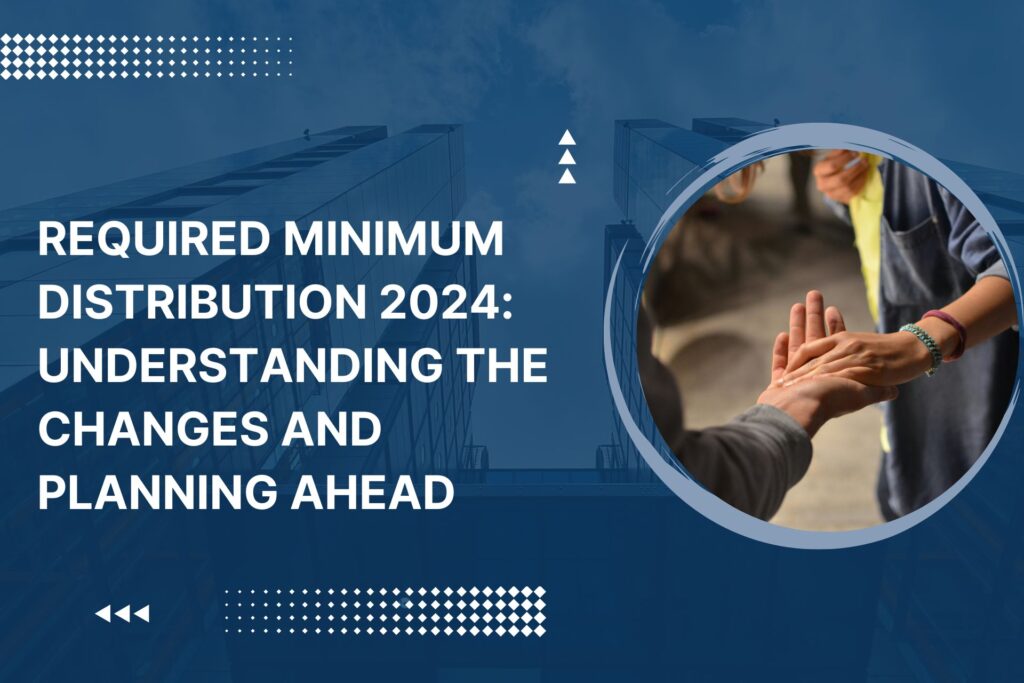What is Required Minimum Distribution?
Required Minimum Distribution (RMD) refers to the minimum amount that retirees must withdraw from their retirement accounts annually. These accounts include traditional IRAs, 401(k)s, 403(b)s, and other qualified retirement plans.
Required Minimum Distribution Rules and Regulations
Age requirement for Required Minimum Distribution
Retirees are required to start takingRequired Minimum Distribution once they reach the age of 72. Failure to withdraw the required amount can lead to penalties imposed by the Internal Revenue Service (IRS).
Calculation of Required Minimum Distribution
Retirees are required to start taking Required Minimum Distribution once they reach the age of 72. Failure to withdraw the required amount can lead to penalties imposed by the Internal Revenue Service (IRS).
Penalties for not taking Required Minimum Distribution
Retirees who fail to withdraw the full Required Minimum Distribution amount are subject to a hefty penalty of 50% of the amount not withdrawn. It’s essential to adhere to the RMD rules to avoid unnecessary financial losses.
Changes in Required Minimum Distribution for 2024
Updates inRequired Minimum Distribution regulations
In 2024, the IRS has made some notable changes to the Required Minimum Distribution rules, impacting how retirees manage their retirement accounts.
Impact on retirees
These updates may have significant implications for retirees, requiring them to reassess their withdrawal strategies and financial plans.
Strategies for Managing Required Minimum Distribution
Planning ahead for RMD
Retirees can mitigate the impact of Required Minimum Distribution by planning ahead and exploring various withdrawal strategies. This may include spreading withdrawals over the course of the year or reinvesting the withdrawn amount.
Options for reinvesting RMD
Instead of spending the withdrawn RMD amount, retirees can reinvest it in taxable accounts or donate it to charity, thereby reducing their taxable income.
Want to Know More about Required Minimum Distribution?
Click here to Schedule a Free Consultation Today!Tax Implications of Required Minimum Distribution
Taxation on RMD
RMD withdrawals are subject to ordinary income tax rates, which can vary depending on the retiree’s overall income and tax bracket.
Ways to minimize tax burden
Retirees can employ tax planning strategies such as Roth conversions or qualified charitable distributions (QCDs) to minimize the tax impact of RMD.
Common Mistakes to Avoid with Required Minimum Distribution
Forgetting to take Required Minimum Distribution
One common mistake is forgetting to take the Required Minimum Distribution, which can result in substantial penalties. Setting up automatic withdrawals or reminders can help retirees stay on track.
Inaccurate calculations
Another mistake is miscalculating the RMD amount, leading to either under or over-withdrawing funds. Consulting a financial advisor or utilizing online calculators can ensure accurate calculations.
Common Mistakes to Avoid with RMD
Inaccurate calculations
Another mistake is miscalculating the Required Minimum Distribution amount, leading to either under or over-withdrawing funds. Consulting a financial advisor or utilizing online calculators can ensure accurate calculations.
Inaccurate calculations
Another mistake is miscalculating the RMD amount, leading to either under or over-withdrawing funds. Consulting a financial advisor or utilizing online calculators can ensure accurate calculations.
Impact of RMD on Retirement Planning
How Required Minimum Distribution affects retirement income
RMD can significantly impact retirees’ income streams, potentially affecting their lifestyle and long-term financial security.
Incorporating RMD into financial plans
Retirees should factor RMD into their overall retirement planning, considering its implications on cash flow, taxes, and legacy planning.
FAQ's (Frequently Asked Questions)
What happens if I don't take my RMD in 2024?
Failure to withdraw the full RMD amount can result in a hefty penalty of 50% of the amount not withdrawn, as per IRS regulations.
Can I reinvest my RMD to avoid taxation?
While RMD withdrawals are subject to taxation, retirees can reinvest the withdrawn amount into taxable accounts or donate it to charity to reduce their taxable income.
How often do I need to take my RMD?
RMD withdrawals must be taken annually, with the deadline typically being December 31st of each year.
Are there any exceptions to the RMD rules?
Certain retirement accounts, such as Roth IRAs, are not subject to RMD requirements during the original account owner’s lifetime.
What are the consequences of inaccurately calculating my RMD?
Inaccurate RMD calculations can lead to either under or over-withdrawing funds, potentially resulting in tax penalties or unnecessary tax burdens.
Conclusion
Retirees should factor Required Minimum Distribution into their overall retirement planning, considering its implications on cash flow, taxes, and legacy planning.
SHARE THIS POST
Generation X and Retirement: Discover smart strategies to avoid costly mistakes and secure your future with effective financial planning.
Discover the key differences between a Defined Benefit Plan vs 401k, and find the best pension plan for small business owners.
Learn how pension plans for small business owners can help save up to $300,000 annually in taxes with maximum deductions.
Effectively use Cash Balance Plan calculator in 2025 to optimize your retirement savings and financial planning. To know more contact us!


